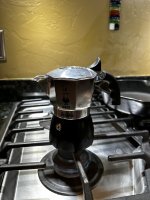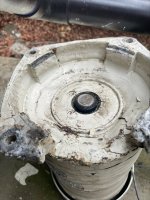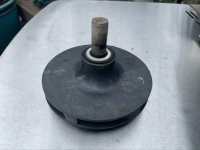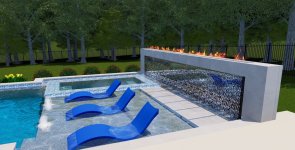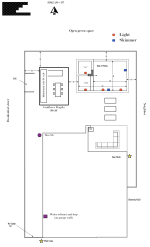Many of us may have had the unfortunate experience of adding soda ash to raise the pH and turned the pool water a milky white… in fact, we refer to it as “milking” a pool. Why does that happen and what does that do to the water?
Well, the soda ash (sodium carbonate) is normally very soluble in the water and goes into solution almost immediately. But it also can raise the pH and the Saturation Index high enough to cause calcium bicarbonate (dissolved calcium in the pool water, or calcium hardness) to precipitate. The white cloud you see is not actually the soda ash, but precipitated calcium carbonate.
If a small amount of calcium carbonate is precipitated and creates some cloudiness, it generally and gradually, usually within minutes, re-dissolves and clears up. The added carbonate (from soda ash) blends through the pool, changing and becoming bicarbonates of calcium and sodium, and the pH and the alkalinity rise, as planned. But if too much calcium is precipitated, it triggers a reaction that results in calcium carbonate precipitate that does not typically dissolve back into the rest of the water.
When a pool is milked, steps can be taken to either re-dissolve the calcium (by lowering the pH using acid until the Saturation Index value is low enough so that the calcium carbonate becomes bicarbonate and is re-solubilized), or we can filter out the precipitate and lower the calcium level.
The advantage of the first option is that within an hour or two the pool water can be clear again, but with everything (including the calcium!) back where it came from. The advantage of the second is that we pool water can be softened by reducing the calcium hardness level, but the pool will be cloudy through the filtration process, which may take days or a week.
By manipulating the water’s saturation chemistry, calcium can be removed via an ion exchange-style process of adding sodium to remove calcium, and then clear the water by filtration.
By way of example, we helped a pool owner who’s 18,000-gallon pool had a calcium hardness level of 1196 ppm, a pH of 8.2, and a total alkalinity of 180. The pool owner did not want to drain the pool unless they really had to, so they contacted us. We added 70 pounds of soda ash to the pool. This precipitated around 70 pounds of calcium carbonate, which was filtered from the pool. The resultant readings were a calcium hardness level of 589 ppm, a pH of 7.5, and a total alkalinity of 158.
Wait a minute! Didn’t adding 70 POUNDS of soda ash cause a HUGE increase in pH and alkalinity? Actually, and perhaps surprisingly, no. Since there is an almost one-to-one exchange of alkaline materials (sodium carbonate in and calcium carbonate out), the pH and the alkalinity actually stayed about the same.
Caustic soda (sodium hydroxide or NaOH) can also be used instead of soda ash to precipitate calcium. Less material is required for the same result, but sodium hydroxide may not be available and convenient as the soda ash.
There are variables in how much calcium is precipitated from a given amount of soda ash. These include water temperature (the higher the temperature, the more precipitate), the existing level of calcium, and addition method (the more “localized” the addition method, the more precipitate).
We have found that a simple application of chemistry can save a pool owner from the necessity of draining their pool, and that the calcium carbonate precipitate should not adhere to the pool surface if continually brushed and removed by filtration quickly.
This procedure, however, does not lower CYA or TDS levels.

